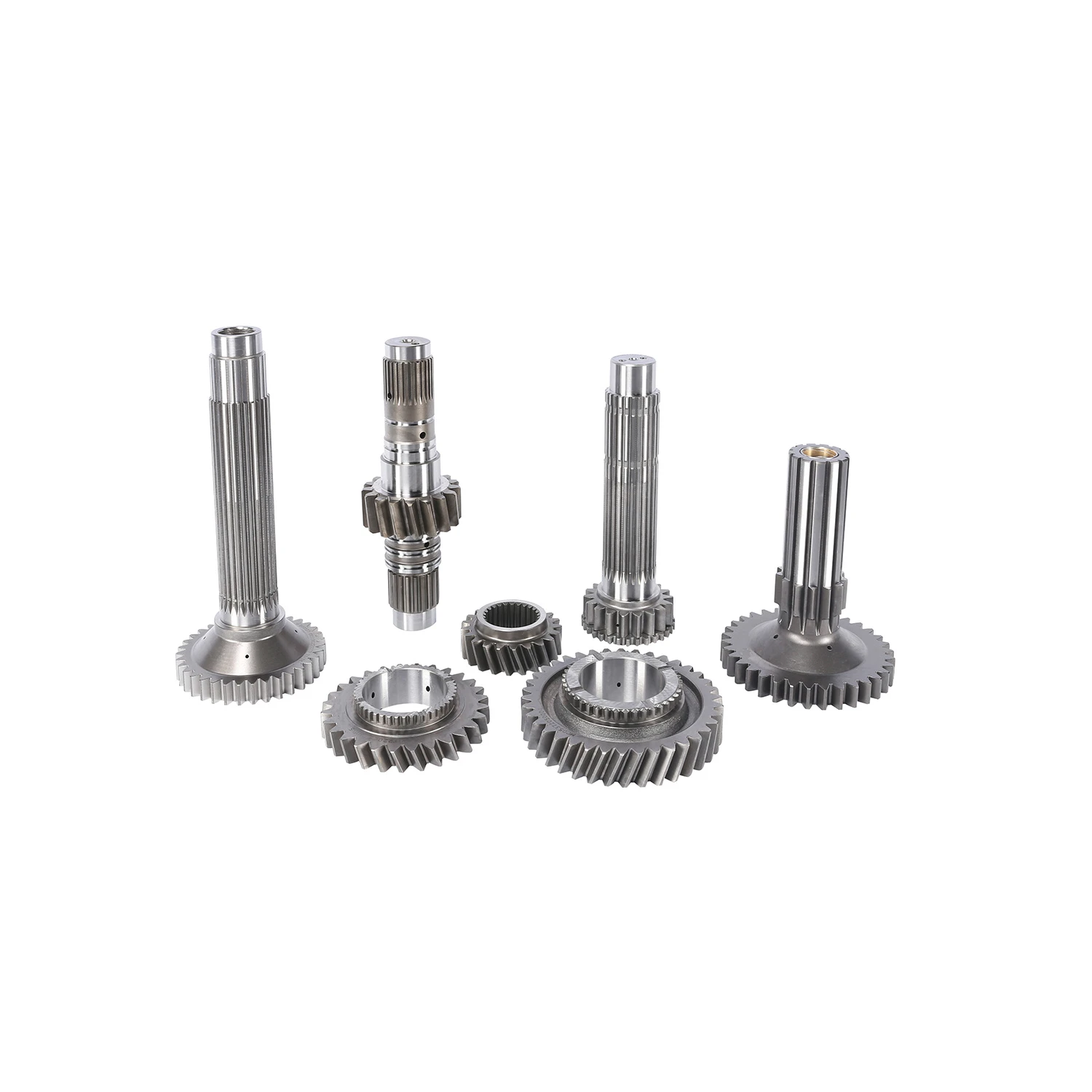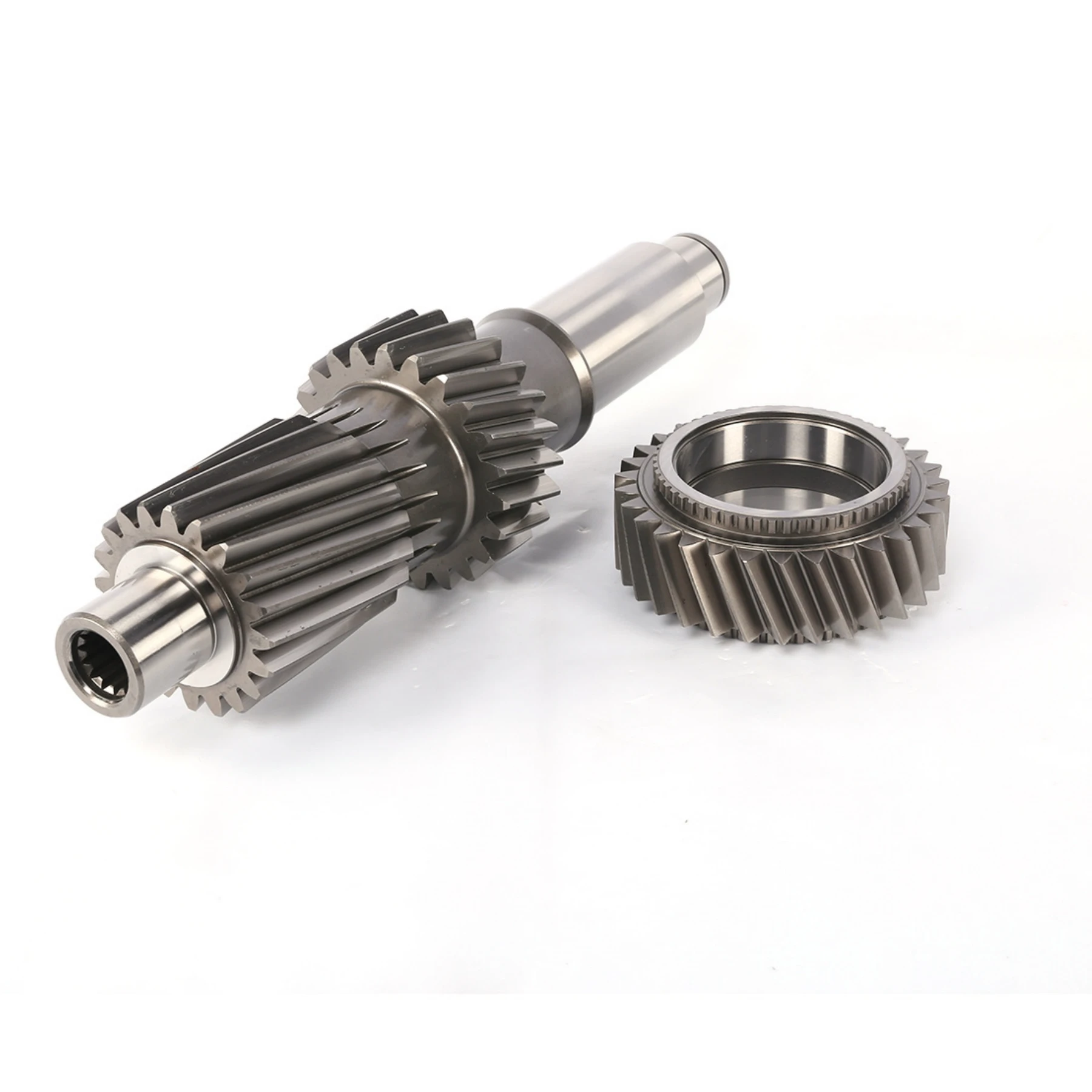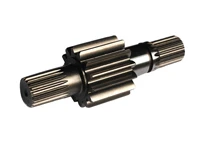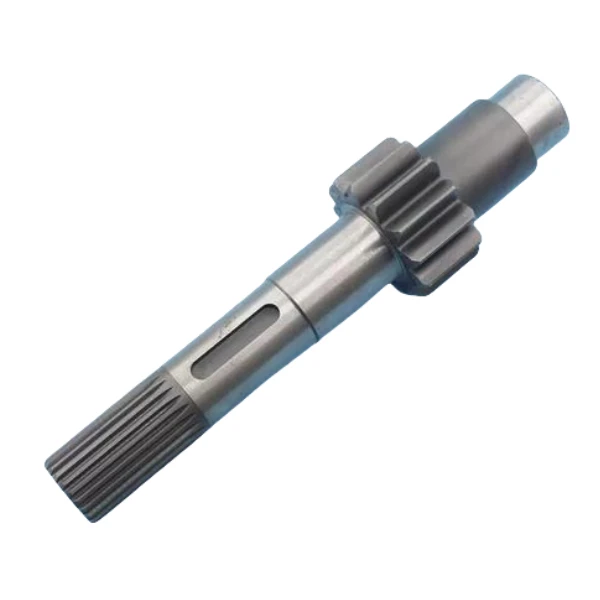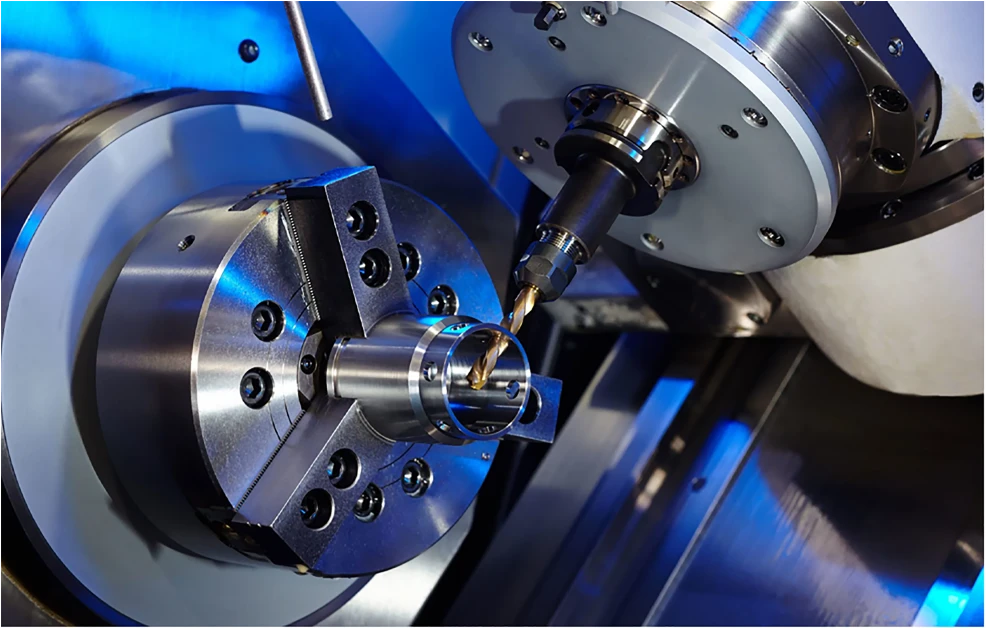Precision Sprocket Gears: Durable, Efficient, & Reliable
Understanding Sprocket Gear Technology and Its Industrial Impact
In the realm of mechanical power transmission, the sprocket gear stands as a fundamental component, critical for synchronized motion and efficient power delivery in countless industrial applications. Often paired with chains, belts, or tracks, these precision-engineered components are indispensable for converting rotational motion into linear movement or for transferring power between shafts with precise speed ratios. This comprehensive guide delves into the intricate world of sprocket components, exploring their manufacturing, applications, technical merits, and strategic considerations for B2B decision-makers and engineers.
The design and material selection of a sprocket gear are paramount to its performance, directly influencing system efficiency, durability, and operational safety. From heavy-duty industrial machinery to precision conveying systems, the demand for robust and reliable power transmission solutions continues to drive innovation in materials science and manufacturing processes. We will also touch upon related gearing technologies such as cycloidal gear and internal gear systems, offering a holistic view of mechanical power transmission solutions.
Industry Trends and Market Dynamics for Power Transmission Components
The global market for power transmission components, including various types of gears, is experiencing significant evolution. Key drivers include the ongoing automation of manufacturing processes, the push for energy efficiency, and the increasing complexity of machinery across diverse sectors. According to recent market analysis, the industrial gears market is projected to reach USD 75 billion by 2027, growing at a CAGR of approximately 5.5% from 2022. This growth is largely fueled by expanding industrial infrastructure in emerging economies and the modernization of existing facilities in developed regions.
Innovations in materials, such as advanced alloys and composites, are enhancing the strength-to-weight ratio and corrosion resistance of components like industrial sprockets. Furthermore, the integration of smart manufacturing principles, including predictive maintenance and IoT-enabled monitoring, is changing how these components are designed, operated, and maintained. The shift towards higher power density and reduced footprint in machinery also places a premium on precision-engineered gears that can handle demanding loads in compact spaces. There's a growing emphasis on custom solutions, where standard components are adapted or entirely redesigned to meet specific operational requirements, optimizing performance and extending service life.
The Meticulous Manufacturing Process of Sprocket Gears
The production of a high-quality sprocket gear is a multi-stage, precision-intensive process, designed to ensure optimal performance, durability, and adherence to strict industry standards. The selection of materials and manufacturing techniques is tailored to the specific application, considering factors such as load, speed, environment, and desired service life.
1. Material Selection
Common materials for sprockets include high-strength alloy steels (e.g., 4140, 8620, 1045), cast iron, stainless steel for corrosive environments, and specialized engineering plastics for lighter duty or noise-sensitive applications. The choice dictates the component's ultimate tensile strength, yield strength, hardness, and wear resistance. For example, 4140 alloy steel offers excellent toughness and fatigue resistance after heat treatment, making it ideal for heavy-duty industrial applications.
2. Manufacturing Processes
The primary manufacturing routes include:
- Casting: For larger, complex geometries or high-volume production where material costs need to be controlled. Sand casting or investment casting can be employed. This often requires subsequent machining for critical dimensions.
- Forging: Preferred for maximum strength and fatigue resistance. Hot forging improves grain structure and eliminates porosity. This method is common for demanding power transmission components.
- CNC Machining: Precision machining from bar stock or plate for smaller, high-accuracy parts. Processes include turning (for bore and outer diameter), milling (for keyways and bolt patterns), and hobbing or shaping (for tooth cutting). Hobbing is particularly efficient for producing involute tooth profiles.
- Laser Cutting/Plasma Cutting: For initial blanking of larger sprockets from sheet material, followed by machining.
3. Heat Treatment and Surface Finishing
After machining, heat treatment is crucial for enhancing mechanical properties.
- Hardening and Tempering: To achieve desired hardness (e.g., 45-55 HRC) and toughness.
- Case Hardening (Carburizing/Nitriding): Creates a hard, wear-resistant surface while maintaining a tough core, significantly extending service life in abrasive environments.
- Black Oxide Coating/Zinc Plating: Provides corrosion resistance and a clean finish.
4. Quality Control and Testing Standards
Each power transmission sprocket undergoes rigorous quality checks to meet international standards such as ISO (e.g., ISO 9001 for quality management), ANSI (American National Standards Institute) B29.1 for roller chain sprockets, and AGMA (American Gear Manufacturers Association) standards for gear tooth profiles and tolerances.
- Dimensional Inspection: Using CMMs (Coordinate Measuring Machines) for precise measurements of bore, pitch diameter, tooth profile, and runout.
- Material Testing: Hardness testing (Rockwell, Brinell), tensile strength tests, and metallurgical analysis to confirm material composition and structure.
- Non-Destructive Testing (NDT): Magnetic Particle Inspection (MPI) or Ultrasonic Testing (UT) to detect surface or subsurface flaws.
Schematic Process Flow for Sprocket Manufacturing
The stringent adherence to these manufacturing steps, coupled with continuous innovation in production methodologies, ensures the longevity and reliable performance of every sprocket gear, minimizing downtime and maximizing operational efficiency for end-users.
Technical Specifications and Performance Parameters
Selecting the appropriate sprocket gear requires a deep understanding of its technical specifications. Key parameters directly influence system design, power capacity, and operational lifespan.
Key Technical Parameters:
- Pitch: The distance between the centers of two adjacent teeth, measured along the pitch circle. Critical for matching with chains or belts.
- Number of Teeth (Z): Directly affects the gear ratio and rotational speed. More teeth generally lead to smoother operation and less chain articulation wear.
- Bore Diameter: The inner diameter of the sprocket, matched to the shaft it will be mounted on.
- Material Hardness: Measured in Rockwell (HRC) or Brinell (HB), indicating resistance to wear and deformation. Hardened teeth significantly extend service life.
- Power Rating: The maximum power (in kW or HP) a sprocket can reliably transmit at a given speed, considering chain type and operating conditions.
- Fatigue Life: The number of stress cycles a sprocket can withstand before failure, crucial for high-cycle applications.
Typical Product Specifications Table (Example for a Standard Roller Chain Sprocket)
| Parameter | Specification Range | Typical Value (ANSI #50) |
|---|---|---|
| Material | C45, 4140, 8620 Steel | 4140 Alloy Steel |
| Pitch (P) | 6.35 mm - 63.5 mm (0.25" - 2.5") | 15.875 mm (0.625") |
| Number of Teeth (Z) | 8 to 120 | 24 |
| Bore Diameter | 10 mm - 150 mm (0.4" - 6") | 30 mm (1.18") |
| Tooth Hardness | 30-60 HRC (if heat treated) | 50-55 HRC (Case Hardened) |
| Max RPM | Up to 4000 RPM (application dependent) | 1500 RPM |
| Surface Finish | Ra 1.6 - Ra 3.2 µm | Ra 1.8 µm |
These specifications are carefully selected to optimize performance for specific industrial demands, ensuring compatibility and operational longevity for the power transmission system.
Application Scenarios and Target Industries
The versatility of the sprocket gear makes it an essential component across a broad spectrum of industries, facilitating power transmission and precise motion control in demanding environments.
Target Industries:
- Petrochemical: Used in pumps, mixers, and conveyor systems that transport crude oil, chemicals, or refined products. Requires corrosion-resistant materials and robust designs due to harsh operating conditions.
- Metallurgy: Critical for heavy-duty conveyors in steel mills, rolling mills, and mining operations, where components must withstand extreme temperatures, abrasive dust, and high loads.
- Water Supply & Drainage: Integrated into pumping stations, filtration systems, and sludge removal equipment. Components often require excellent corrosion resistance for continuous operation in wet or chemically treated environments.
- Material Handling: Essential in logistics, warehousing, and manufacturing for conveyor belts, automated guided vehicles (AGVs), and lifting equipment.
- Agriculture: Found in tractors, harvesters, and irrigation systems for transmitting power to various implements.
- Automotive & Heavy Equipment: Integral to engine timing systems, track drives for excavators, and various internal mechanisms.
Advantages in Typical Application Scenarios:
- Energy Saving: Precision-machined sprockets with optimized tooth profiles reduce friction and backlash, leading to higher transmission efficiency and lower energy consumption in continuous operations like conveyor systems.
- Corrosion Resistance: For environments like water treatment plants or chemical processing, sprockets made from stainless steel or with specialized coatings ensure extended service life, reducing maintenance and replacement costs.
- Reliability in Harsh Conditions: Case-hardened alloy steel sprockets offer superior wear resistance against abrasive particles common in mining or cement production, ensuring consistent performance and minimizing unplanned downtime.
- Precision Motion Control: In robotics or automated assembly lines, highly accurate power transmission components contribute to precise positioning and synchronized movement, crucial for quality and productivity.
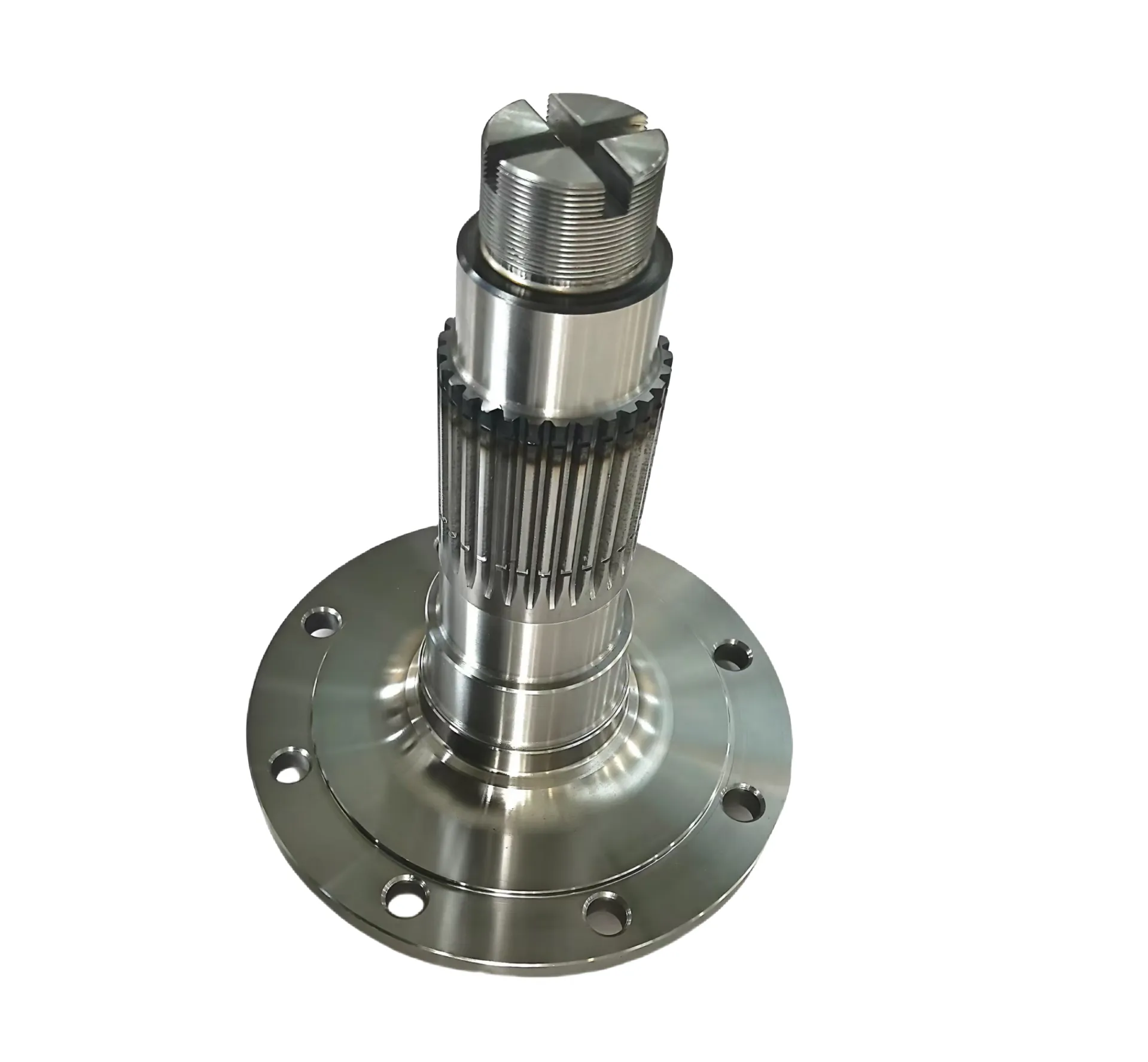
Image: A precision-engineered industrial component, optimized for heavy-duty applications.
Technical Advantages and Comparative Analysis
Beyond their foundational role, modern power transmission sprockets incorporate advanced features that deliver significant technical advantages, particularly when compared to other gear types.
Advantages of Sprocket and Chain Systems:
- Positive Drive: Unlike belt drives, sprocket and chain systems offer a positive, slip-free drive, ensuring precise speed ratios and synchronization, critical for indexing and timing applications.
- High Load Capacity: Can transmit significant power and torque, especially with multi-strand chains, making them suitable for heavy industrial machinery.
- Adaptability: Easily handle long center distances between shafts, which is challenging for direct gear meshes.
- Robustness and Durability: Engineered for harsh environments, capable of operating effectively in dusty, dirty, or high-temperature conditions.
- Cost-Effectiveness: For many industrial applications, sprocket and chain systems offer a more economical solution per unit of transmitted power compared to complex gearboxes.
Comparison with Related Gear Technologies:
While the traditional sprocket excels in its domain, other gearing technologies like the cycloidal gear and internal gear offer distinct advantages for specific applications.
| Feature | Sprocket & Chain Drive | Cycloidal Gear Drive | Internal Gear |
|---|---|---|---|
| Primary Function | Power transmission, motion synchronization over distances | High reduction ratios, high torque, high precision | Compact design, high torque, parallel shaft drives |
| Complexity | Moderate (sprocket + chain) | High (complex tooth profiles, multiple elements) | Moderate (requires precise machining) |
| Backlash | Typically moderate to high (chain slack) | Extremely low/zero backlash | Low backlash (compared to external gears) |
| Efficiency | 70-98% (depends on chain type, lubrication) | High (85-93%) | High (90-98%) |
| Typical Applications | Conveyors, agricultural machinery, heavy industry, bicycles | Robotics, machine tools, automation, precise positioning | Planetary gearsets, compact transmissions, industrial mixers |
The choice among these systems hinges on the specific performance requirements, available space, cost considerations, and environmental factors of the application.
Vendor Comparison and Selection Criteria
Selecting the right supplier for a power transmission component is as crucial as the product's design. A reliable vendor ensures consistent quality, adherence to specifications, and robust after-sales support.
Key Vendor Selection Criteria:
- Certifications: Look for ISO 9001:2015 certification for quality management, and adherence to relevant industry standards (e.g., ANSI, AGMA, DIN).
- Experience & Specialization: Vendors with extensive experience (e.g., 10+ years) in high-precision gear manufacturing and a specialization in heavy-duty or specific industrial sectors often offer superior expertise.
- Manufacturing Capabilities: Assess their ability to perform various processes in-house (casting, forging, advanced CNC machining, heat treatment) to ensure control over quality and lead times.
- Quality Control & Testing: Inquire about their QC protocols, including NDT, metallurgical analysis, and dimensional verification with calibrated equipment.
- Customization Capabilities: The ability to provide tailored solutions for unique operational demands is a significant differentiator.
- Lead Time & Logistics: Transparency and reliability in fulfilling orders and managing logistics are vital for supply chain stability.
- Customer Support & Warranty: Comprehensive pre-sales consultation and robust after-sales support, including clear warranty terms, are indicators of a committed partner.
At Zinanmech, for example, our commitment to ISO 9001 certified manufacturing processes and a decade of experience in producing high-precision components like the flange shaft, which often integrates with sprockets in critical applications, demonstrates a strong foundation for delivering reliable power transmission solutions.
Customized Solutions for Unique Industrial Demands
Standard sprocket designs, while widely applicable, often fall short in highly specialized or extreme operating environments. This is where customized solutions become indispensable. Tailoring a power transmission component involves more than just modifying dimensions; it encompasses optimizing material composition, tooth geometry, heat treatment, and surface finishes for peak performance in specific scenarios.
Our engineering team collaborates closely with clients to define precise requirements, considering factors such as:
- Material Modifications: Utilizing exotic alloys for enhanced corrosion resistance (e.g., Duplex Stainless Steel for marine applications) or higher strength-to-weight ratios (e.g., aerospace-grade alloys).
- Optimized Tooth Profiles: Designing non-standard tooth geometries to reduce noise, improve meshing efficiency, or accommodate specific chain types or wear patterns.
- Special Coatings: Applying advanced coatings like Tungsten Carbide (WC) for extreme abrasion resistance, or PTFE coatings for low-friction, self-lubricating properties.
- Integrated Features: Incorporating sensors for real-time monitoring of wear, temperature, or vibration, enabling predictive maintenance.
- Precision Balancing: For high-speed applications, dynamic balancing of sprockets can reduce vibrations and extend bearing life.
These bespoke solutions ensure that the drive sprocket is not just a component, but an integral, optimized part of a larger system, delivering superior long-term value.
Application Case Studies and Customer Success Stories
Real-world applications best demonstrate the impact of well-engineered power transmission solutions. Our experience, collaborating with leading industrial partners, has yielded significant operational improvements.
Case Study 1: Heavy-Duty Conveyor System in a Cement Plant
- Challenge: A major cement manufacturer faced frequent downtime due to rapid wear of their conveyor sprockets in an extremely abrasive, high-load environment. Standard carbon steel components required replacement every 6 months.
- Solution: We engineered custom sprockets from 8620 alloy steel, case-hardened to 58 HRC, with a specialized surface treatment for enhanced abrasion resistance. The tooth profile was also optimized for better chain engagement and reduced impact wear.
- Result: The service life of the sprockets increased to over 24 months, reducing maintenance costs by 75% and improving overall plant uptime by 15%. "The new sprockets have significantly cut down our operational expenditures and increased our throughput," reported the plant manager.
Case Study 2: Precision Timing System for an Automated Assembly Line
- Challenge: An automotive component assembly line required extremely precise, low-backlash timing for robotic placement, where even minimal chain slack caused positioning errors.
- Solution: We supplied high-precision, fine-pitch sprockets manufactured with tight tolerances (AGMA Q10 equivalent) and optimized for specific silent chain drives. Each sprocket underwent individual CMM inspection and dynamic balancing.
- Result: The client achieved a 99.9% positioning accuracy, eliminating production defects related to timing issues and boosting overall line efficiency. The system now operates with minimal vibration and noise, extending the lifespan of associated bearings and motors.
Trust & Reliability: FAQs, Lead Times, Warranty, and Support
Frequently Asked Questions (FAQs)
A: Service life varies significantly depending on material, application load, operating environment, and maintenance practices. However, with proper material selection and heat treatment, our industrial sprockets are designed for a service life exceeding 5-7 years in continuous operation, with many exceeding a decade.
A: Yes, we specialize in customized solutions and can design and manufacture sprockets to match virtually any chain pitch, roller diameter, or tooth profile, including those for specialized engineering chains or plastic chains.
A: We utilize advanced 5-axis CNC machining centers for tooth cutting and profiling, followed by comprehensive inspection using CMMs and optical comparators. Our quality control processes adhere to stringent international standards like AGMA and ISO to guarantee dimensional accuracy and tooth form.
Lead Time and Fulfillment
Standard sprocket orders typically have a lead time of 4-6 weeks, depending on quantity and specific heat treatment requirements. For custom-engineered solutions, lead times range from 8-12 weeks, allowing for detailed design, material procurement, complex manufacturing, and rigorous testing. We maintain clear communication throughout the fulfillment process, providing regular updates on production milestones and estimated delivery dates. Expedited options are available for urgent requirements, subject to material availability and production scheduling.
Warranty Commitments
All our sprocket gear products are backed by a comprehensive 12-month warranty against manufacturing defects in materials and workmanship, effective from the date of shipment. This warranty underscores our confidence in the quality and durability of our engineering. Terms and conditions apply, ensuring fair and transparent coverage for our clients.
Customer Support and After-Sales Service
Our commitment extends beyond product delivery. We provide dedicated technical support, including installation guidance, troubleshooting, and maintenance recommendations. Our experienced engineers are available for consultation to optimize system performance and address any operational challenges. For inquiries or support, please contact us at info@zinanmech.com or call our technical support line during business hours.
Conclusion
The sprocket gear remains a cornerstone of mechanical power transmission, evolving with advancements in materials science, manufacturing techniques, and smart technology integration. For B2B stakeholders, understanding its nuances, from precision manufacturing to tailored application, is vital for optimizing operational efficiency and ensuring long-term system reliability. Partnering with a specialist vendor committed to quality, customization, and robust support is key to leveraging the full potential of these critical components in demanding industrial environments.
References:
- AGMA (American Gear Manufacturers Association) Standards for Gearing.
- ISO 9001:2015 Quality Management Systems - Requirements.
- ANSI B29.1 - Precision Power Transmission Roller Chains, Attachments, and Sprockets.
- "Handbook of Mechanical Engineering" by K. H. Decker.
- "Industrial Gears Market Size, Share & Trends Analysis Report", Grand View Research, 2022.
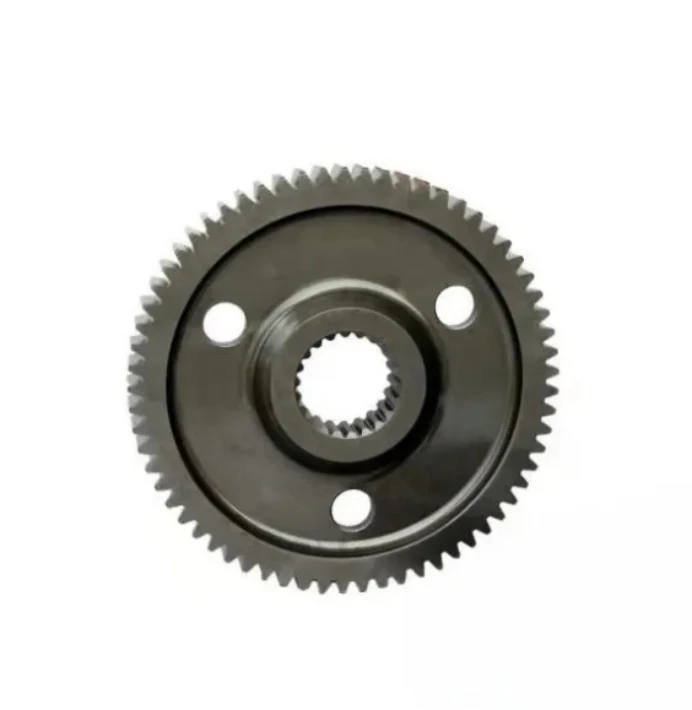
The global rear end gears and quick change gear rear end market is witnessing robust growth, particu
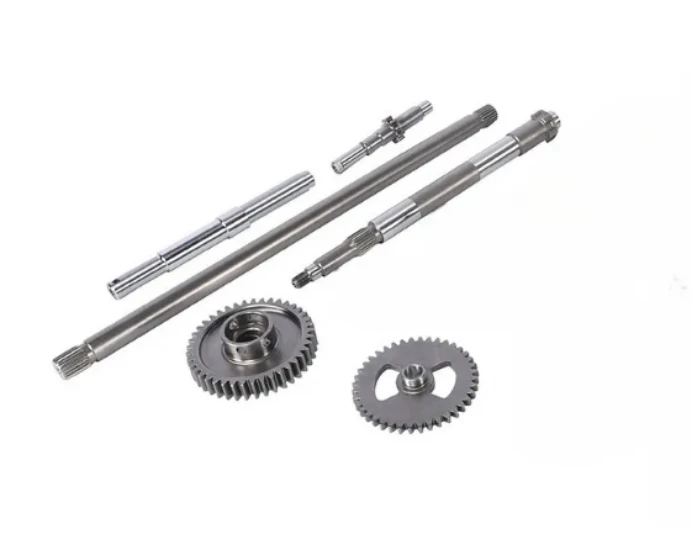
Gear shafts are fundamental mechanical components, serving as the backbone of power transmissio
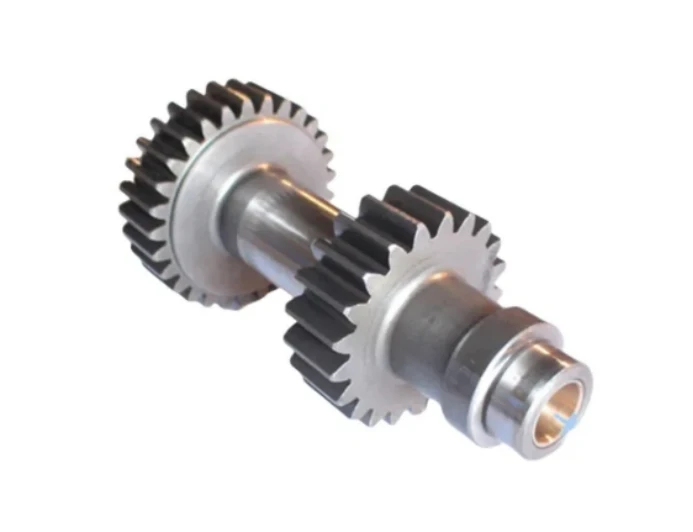
In the intricate world of mechanical engineering and power transmission, the concept of an outp
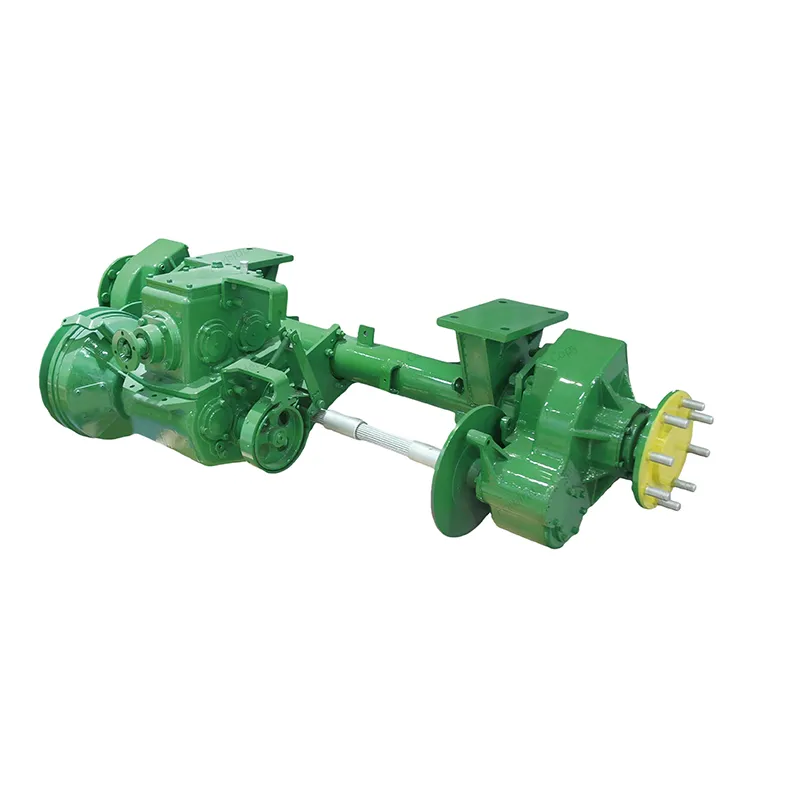
Elevate your build with an AWD K Series transmission, ensuring superior wheel transmission and grip. Perfect for performance cars needing to convert from 2 wheel drive transmission. Enhance traction & power. Shop our reliable K-series AWD solutions today!
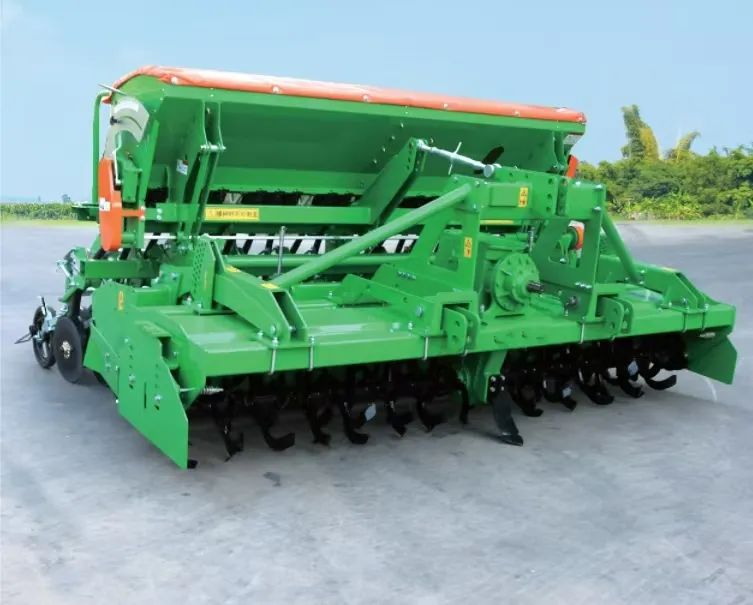
Get the ultimate compact seed drill for sale! Our precise disc drill seeder ensures efficient planting for small farms and diverse crops. Experience minimal soil disturbance with our durable disc seed drill. Shop now for superior results!

Achieve higher yields with our low disturbance seed drill. Perfect for maize and no-till farming, it ensures precise seed placement while preserving soil health. Minimize impact, maximize growth. Explore our maize seed drill machine range today!
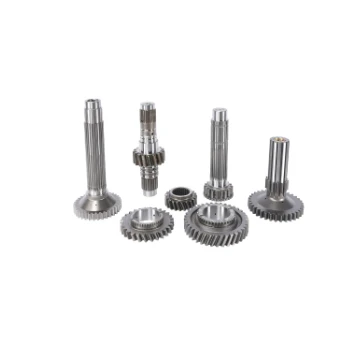
The agricultural and industrial machinery sector is experiencing remarkable growth, and at the heart of this expansion lies the trade and supply of tractors.
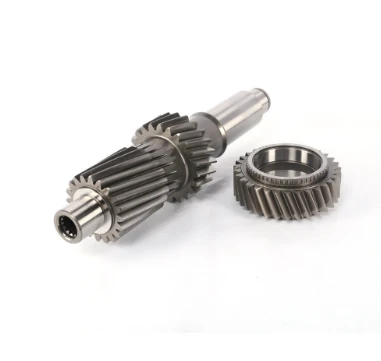
In the world of heavy - duty construction, the seamless operation of machinery is crucial for large - scale projects.
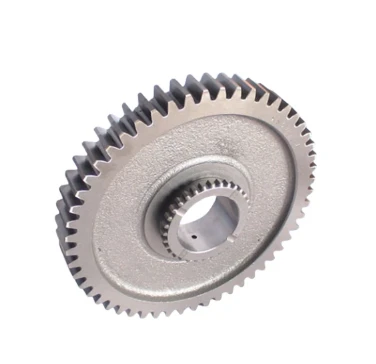
The world of tractors is vast and varied, catering to both practical agricultural needs and the passionate interests of collectors.
International layout
Spread all over the world
our products are exported to various parts of the world. Currently, our products have been exported to more than 40 countries Our products cover Asia, Europe, Africa, South America, North America, and Oceania
Sign up
for Newsletter
Subscribe to the weekly newsletter for all the latest updates


